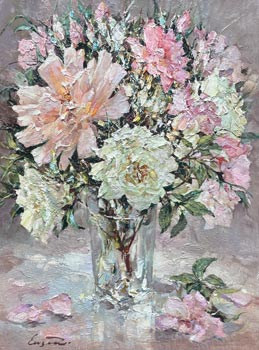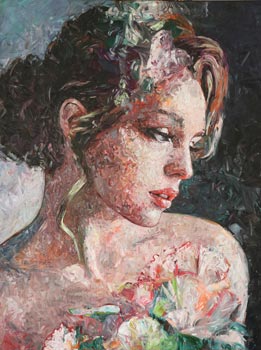The Artists' Muse Tue, 08 Feb 2022

Beauty can be fleeting, fathomless and fabulous. Our lives are enriched by the talents of artists who adopt Beauty as their muse. How enjoyable is it to gaze upon an object of beauty - very. Keats had it right when he wrote … a thing of beauty is a joy forever … and through art Beauty endures.
Amongst many beautiful paintings currently in the gallery is the outstanding portrait of Elizabetta by award-winning artist Jasmine Middlebrook. The work is fascinating. Its contrasting background embraces both light and shade, day and night - while the confident, heavily impastoed brush-strokes, layered with such instinct and feeling for colour and texture, crystalize into a stunning contemporary portrait.
The second painting featured is by Russian born artist Eugenea. A graduate of Moscow's prestigious Surikov Academy of Art, Eugena's latest work Roses francaises pays tribute to nature's beauty in the delicate form of a simple bouquet of dusky pink and white roses. Picked from the the artist's garden to brighten her studio the floral perfume and beauty of the roses did much to lift the spirits. Eugenea found their beauty irresistible and chose to paint them before the last petal fell - Frances Davies

